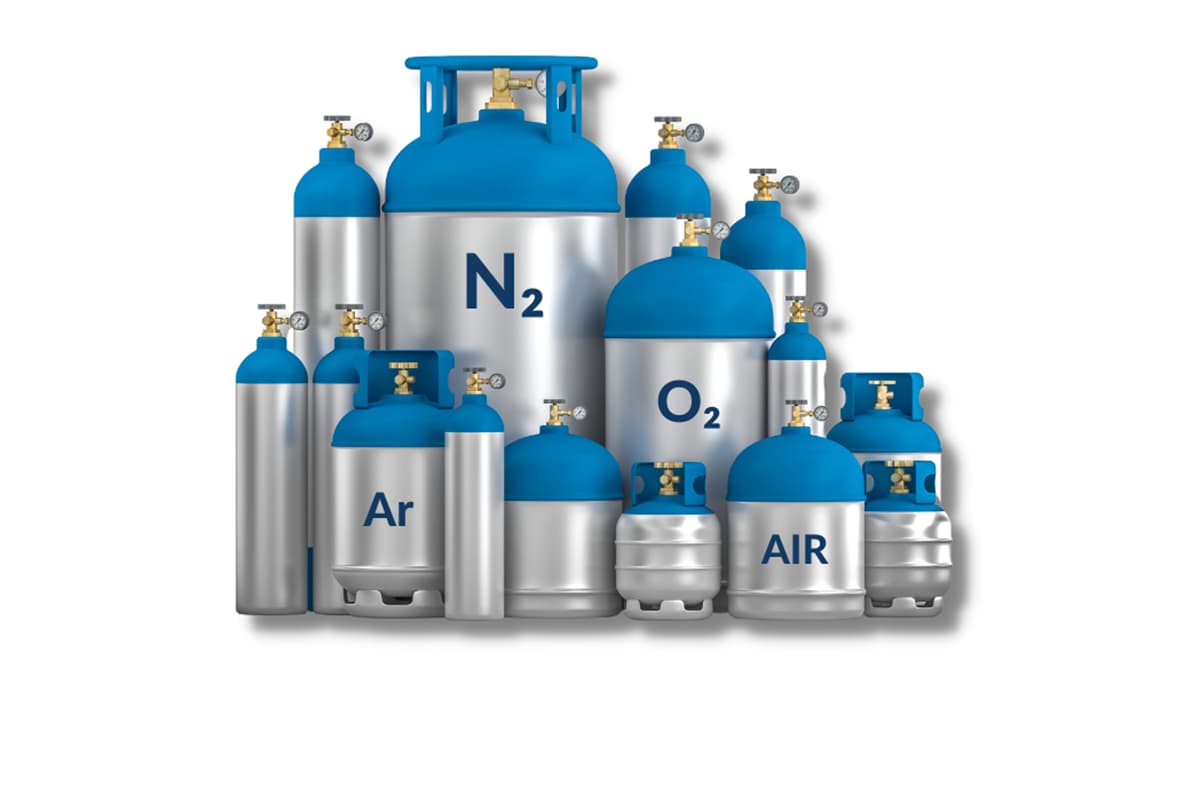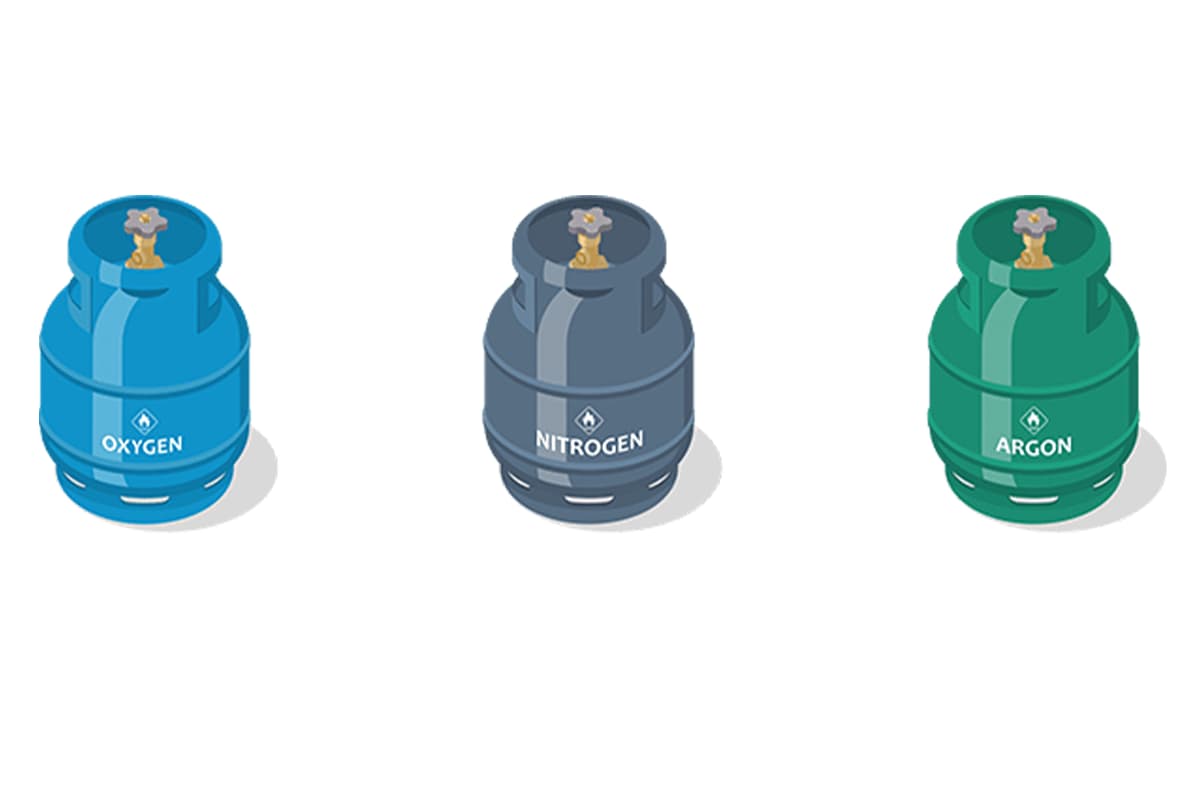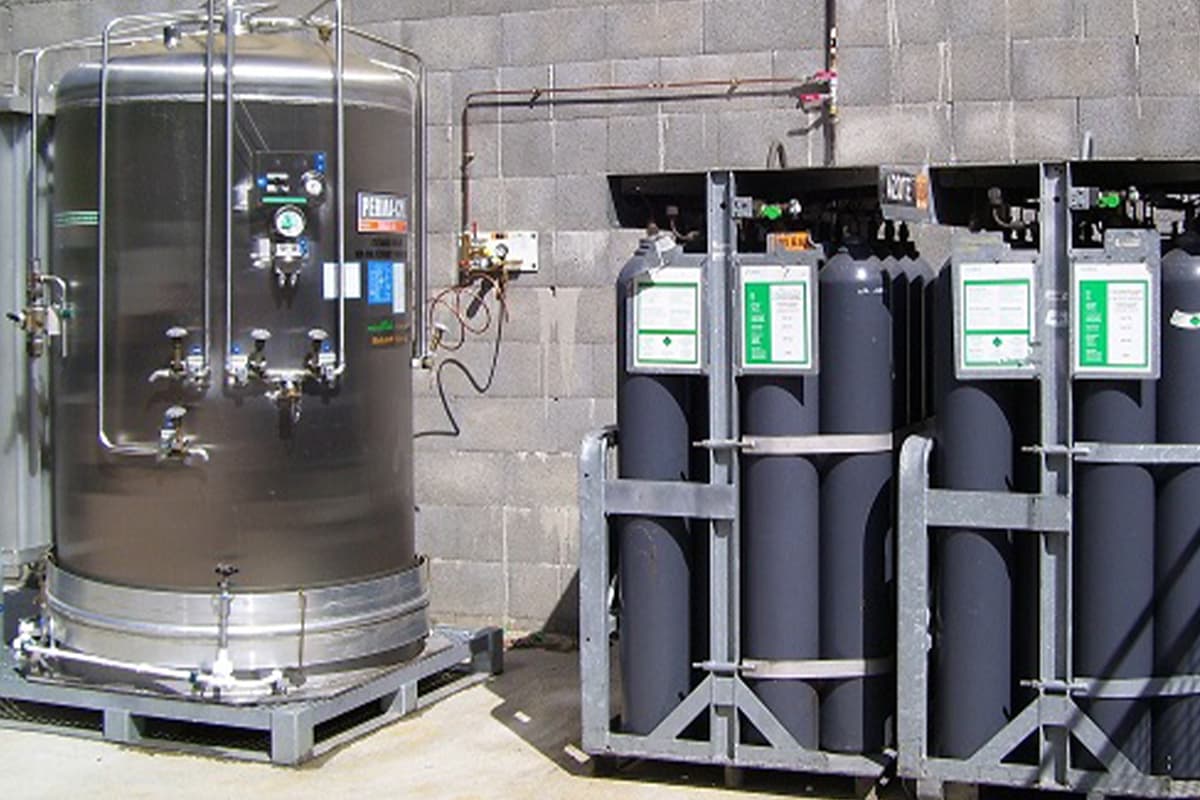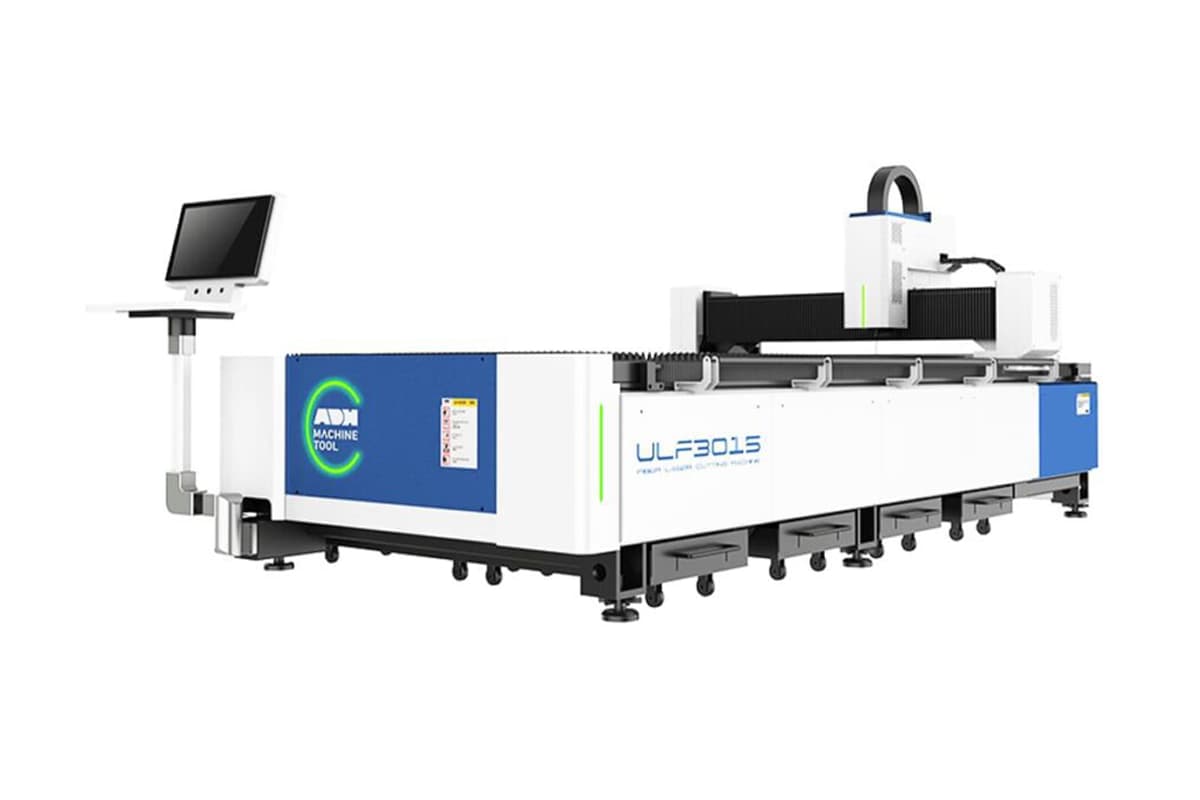I. Introduction
Laser cutting is a widely utilized technology in modern manufacturing, valued for its precision and efficiency in cutting various materials. This process, however, is heavily dependent on the use of assist gases, which play a crucial role in the cutting operation. The selection of the appropriate assist gas is paramount for achieving optimal cutting results, operational efficiency, and cost management.
Assist gases in laser cutting serve multiple purposes, including blowing away molten material, preventing oxidation, and influencing the cutting speed and quality. Commonly used gases include oxygen and nitrogen, each offering distinct advantages and challenges. Understanding these differences and the specific consumption rates of each gas is essential for manufacturers to make informed decisions.
The right choice of assist gas not only enhances the quality of the cut but also significantly impacts the overall cost of the operation. By carefully considering the type of gas, its consumption rate, purity levels, storage solutions, and supply logistics, manufacturers can optimize their laser cutting processes to be both cost-effective and efficient.
II. Types of Assist Gases
1. Oxygen
Description and Chemical Interaction: Oxygen is a highly reactive gas that, when used in laser cutting, facilitates an exothermic reaction with the material being cut. This reaction generates additional heat, significantly increasing the cutting speed and efficiency. The process involves the oxygen oxidizing the molten metal, creating an oxide layer that is more easily vaporized by the laser beam.
Applications: Oxygen is primarily used for cutting mild steel, carbon steel, and low alloy steel. Its reactivity helps in achieving clean and fast cuts, especially in thicker materials (up to 25mm or more). It's particularly effective for structural steel fabrication, heavy equipment manufacturing, and shipbuilding industries.
Pros and Cons:
- Pros:
- Allows for cutting speeds up to 30% faster than nitrogen for certain materials.
- Can cut thicker materials more effectively due to the additional heat generated, reducing the required laser power.
- Lower operational costs due to reduced gas consumption compared to nitrogen.
- Cons:
- The oxidation reaction can lead to a rougher cut edge with a heat-affected zone (HAZ), which may require post-processing in some high-precision applications.
- Not suitable for materials where oxidation is unacceptable, such as stainless steel or aluminum, due to potential corrosion and reduced material properties.
- Can cause edge hardening in some steels, affecting subsequent welding or forming processes.
2. Nitrogen
Description and Mechanical Interaction: Nitrogen, an inert gas, does not react with the material being cut. Instead, it acts mechanically by blowing away the molten material from the cutting kerf at high pressure (up to 25 bar or more), resulting in a clean cut without oxidation. The nitrogen also provides cooling to the cut edge, minimizing the heat-affected zone.
Applications: Nitrogen is widely used for cutting materials such as stainless steel, aluminum, and other non-ferrous metals where a clean, oxidation-free edge is essential. It's particularly valuable in industries like aerospace, medical device manufacturing, and food processing equipment production, where material integrity and surface quality are critical.
Pros and Cons:
- Pros:
- Produces clean, oxidation-free cuts with minimal heat-affected zone, often eliminating the need for post-processing.
- Ideal for cutting non-ferrous metals and highly reflective materials like aluminum and copper.
- Maintains material properties at the cut edge, crucial for subsequent welding or surface treatment processes.
- Cons:
- Requires higher pressure (often 10-25 bar) for effective cutting, which can increase operational costs and equipment requirements.
- Generally slower cutting speeds compared to oxygen when cutting mild steel, especially for thicknesses above 3mm.
- Higher initial investment in high-pressure delivery systems and more powerful laser sources to compensate for the lack of exothermic reaction.

III. Gas Consumption Rates
1. Oxygen Consumption
Pressure Requirement:
- Typical range: 0.5 to 6 bars, depending on material thickness and type
- Common pressure: Around 2-5 bars for most applications
Consumption Rate:
- Average rate: Approximately 5 Nm³/hour
- Range: Can vary from 3-10 Nm³/hour depending on specific conditions
2. Nitrogen Consumption
Pressure Requirement:
- Typical range: 10 to 20 bars, with some applications requiring up to 30 bars
- Higher pressures needed compared to oxygen cutting
Consumption Rate:
- Average rate: Approximately 50 Nm³/hour
- Range: Can vary from 40-120 Nm³/hour depending on application
3. Consumption Comparison for Different Materials
Carbon Steel:
- Oxygen is typically used
- Consumption increases with thickness:
- 1mm: 40L/40 minutes
- 6mm: 40L/90 minutes
Stainless Steel:
- Nitrogen is preferred
- Consumption relatively consistent across thicknesses:
- 1-8mm: Approximately 40L/30 minutes
4. Impact on Cutting Speed and Efficiency
- Higher gas pressures and flow rates generally allow for faster cutting speeds and cleaner cuts
- Increased gas consumption can lead to higher operational costs, but may be offset by improved productivity
- Optimal balance between speed, quality, and gas usage is crucial for efficiency
- Advanced nozzle designs and pulsed laser systems can reduce gas consumption while maintaining cutting performance
- Regular maintenance of gas delivery systems ensures consistent flow rates and prevents unnecessary waste
IV. Gas Purity and Quality

1. Nitrogen Purity
Standard Purity (99.995%): For precision laser cutting applications, nitrogen with a purity of 99.999% (known as "five nines" or 5.0 grade) is considered optimal. This ultra-high purity level ensures superior oxidation prevention and minimizes undesirable chemical reactions during the cutting process, particularly for reactive metals like titanium and high-chromium stainless steels.
Impact of Impurities: Trace impurities in nitrogen can significantly compromise cutting quality and process stability. Critical contaminants include moisture, oxygen, and hydrocarbons. Moisture levels exceeding 3 parts per million (PPM) can induce micro-oxidation on cut edges, while oxygen content above 5 PPM may cause discoloration in sensitive materials. Hydrocarbon contamination above 1 PPM can lead to carbon deposition, reducing laser power transmission and potentially causing optics damage. To maintain optimal cutting performance, it's crucial to maintain total impurities below 10 PPM, with moisture below 3 PPM, oxygen below 5 PPM, and total hydrocarbons below 1 PPM.
2. Oxygen Purity
Standard Purity (99.5%) vs. High Purity (99.95%):
Oxygen used in laser cutting is available in distinct purity grades, each suited for specific applications:
- Standard industrial grade oxygen (2.5 grade) with 99.5% purity is suitable for general cutting of mild steel up to 10mm thickness.
- High purity oxygen (3.5 grade) at 99.95% is recommended for precision cutting, especially for thicknesses above 10mm and for applications demanding superior edge quality.
Effect on Productivity and Cutting Efficiency:
- 99.95% purity oxygen (3.5 grade) is ideal for cutting mild/carbon steels where high edge quality and minimal dross formation are critical.
- It can increase cutting speeds by up to 20% compared to standard industrial grade oxygen, particularly in thicknesses above 15mm.
- Higher purity oxygen promotes more exothermic reactions, generating additional heat that enhances cutting efficiency and allows for faster feed rates.
- The use of 3.5 grade oxygen typically results in smoother cut edges, reduced kerf width variability, and minimized heat-affected zone (HAZ), crucial for subsequent welding or heat treatment processes.
- While higher purity oxygen incurs greater costs, the improved productivity and reduced post-processing requirements often justify the investment for high-volume or high-precision operations.
V. Gas Storage Solutions

1. Cylinders and Racks
Gas Supplied in Gaseous Form: Industrial gases such as oxygen, nitrogen, and argon are commonly stored and supplied in high-pressure cylinders and racks. These vessels contain gas in its compressed state, typically at pressures ranging from 150 to 300 bar (2,175 to 4,350 psi). This storage method is particularly suited for small to medium-scale operations or as a backup supply in metal fabrication workshops.
Pros and Cons:
- Pros:
- Easily implementable with minimal infrastructure requirements.
- Highly flexible for varying consumption rates and multiple gas types.
- Portable, facilitating point-of-use delivery in large facilities.
- Ideal for specialized gases or mixtures used in welding and cutting processes.
- Cons:
- Requires frequent changeouts, potentially disrupting production.
- Limited storage capacity (typically 6 to 50 m³ of gas per cylinder).
- Higher cost per unit volume compared to bulk storage options.
- Increased handling and safety considerations due to high pressure.
2. Tanks
Gas Supplied in Liquid Form: For high-volume consumers in metal fabrication, gases are often stored in cryogenic bulk tanks in their liquid state. This method allows for significantly higher storage density, with liquid nitrogen occupying only 1/696th of its gaseous volume at standard temperature and pressure.
Cost-Effectiveness and Storage Considerations:
- Pros:
- Substantially more cost-effective for operations consuming over 600 m³ per month.
- Drastically reduces delivery frequency, minimizing supply chain disruptions.
- Enables on-site gas generation systems for certain gases like nitrogen.
- Lower pressure storage (typically 2 to 20 bar) enhances safety profile.
- Cons:
- Requires specialized cryogenic equipment and vaporizers for gas conversion.
- Boil-off losses (typically 0.1% to 0.5% per day) must be managed.
- Significant initial capital investment for tank installation and site preparation.
- Demands rigorous safety protocols and trained personnel for cryogenic handling.
3. Mini-Tanks
Intermediate Solution for Average Consumers: Mini-tanks, also known as MicroBulk systems, bridge the gap between high-pressure cylinders and large cryogenic tanks. These units typically hold 230 to 2,000 liters of liquid gas, catering to medium-scale metal fabrication operations.
Benefits of Smaller, Manageable Volumes:
- Pros:
- Easier installation and lower site preparation costs compared to bulk tanks.
- Ideal for businesses consuming 300 to 600 m³ of gas per month.
- Reduces cylinder handling and changeout frequency, enhancing workplace safety.
- Allows for precise inventory management through telemetry systems.
- Cons:
- Still requires periodic refilling, though less frequently than cylinders.
- May not achieve the economies of scale offered by full bulk systems for high-volume users.
- Limited to common industrial gases; not suitable for specialty gas mixtures.

VI. FAQs
1. What is the main difference between oxygen and nitrogen in laser cutting?
Oxygen is used for steel cutting, involving a chemical reaction that produces oxidation, while nitrogen provides a clean cut without chemical interaction and can be used on various materials.
2. How does gas purity affect laser cutting efficiency?
Higher purity oxygen improves productivity, especially for thin steel sheets, while standard nitrogen purity is usually sufficient, with concerns more on impurities like hydrocarbons and moisture.
3. What are the benefits of using mini-tanks for gas storage?
Mini-tanks offer a manageable solution for average gas consumers, reducing the need for frequent refills and allowing for easier handling and storage.
4. Why is network installation crucial for gas supply in laser cutting?
A well-designed network prevents gas pollution and ensures consistent gas flow, protecting the laser machine’s head and maintaining production quality.
VII. Conclusion
Choosing the right assist gas and managing its consumption efficiently is critical for optimizing laser cutting operations. Each type of gas—oxygen and nitrogen—has specific benefits and drawbacks, which must be weighed against the operational requirements and costs.
As a professional sheet metal manufacturer with over 20 years of experience in producing laser cutting machines, we at ADH Machine Tool deeply understand the importance of gas consumption to our customers.
Over the years, we have been dedicated to researching, developing, and manufacturing high-performance, low-gas-consumption laser cutting equipment to help our clients achieve efficient and economical production. If you have any questions or requirements regarding gas consumption in laser cutting, please feel free to contact us at any time.
Komori Offset,Komori Presses,Presse Offset Komori,Komori Digital Press
Guangzhou Baiyin Co.,Ltd , https://www.printerfinisher.com